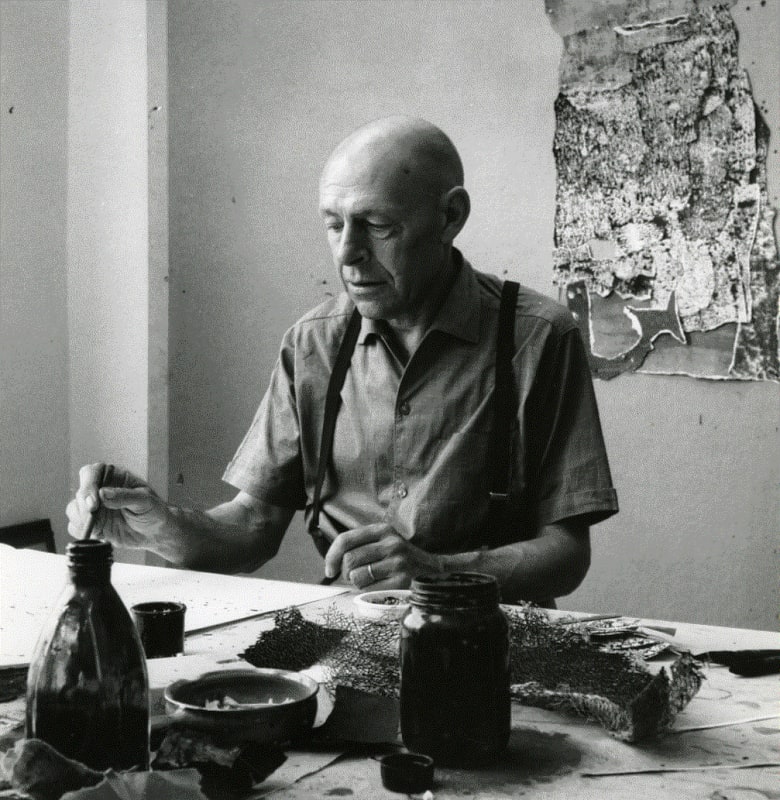“True invention begins where language stops.”
Jean Dubuffet (1901-1985) was a major figure in 20th-century art, renowned for his radical approach and his redefinition of artistic boundaries. As a painter, sculptor, printmaker, and theorist, Dubuffet rejected academic conventions, favoring a raw, spontaneous aesthetic free of embellishment.
After a brief period of study at the Académie Julian in Paris, Dubuffet distanced himself from the traditional art world to pursue a career in the wine trade, before returning to art with a renewed vision. His first solo exhibition in 1944 was met with controversy, as it defied prevailing aesthetic norms. Using unconventional materials—sand, plaster, bitumen, and industrial varnishes—he explored texture and alternative supports, giving his works a visceral, anti-academic character.
He was the leading theorist and advocate of Art Brut, a term he coined to describe the spontaneous creations of self-taught artists, outsiders, and individuals working beyond institutional frameworks. His research into outsider art had a profound impact on modern art, challenging cultural hierarchies and emphasizing raw, instinctive expression.
From the 1960s onward, Dubuffet expanded his practice into sculpture and architectural projects, creating monumental works that deconstructed traditional form and structure. Notable among these are the L’Hourloupe series, where line and color acquire a near-graphic dynamism, and his immersive environments, such as the Coulée verte, which transcend the boundaries of painting and exhibition space.
His legacy remains alive through the Fondation Dubuffet in Paris, which preserves and promotes his work. His production continues to be celebrated for its irreverence, innovation, and ability to break established paradigms, influencing generations of artists who explore creation beyond conventional norms.
